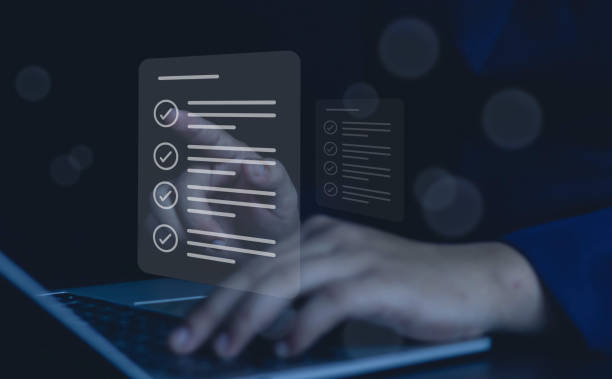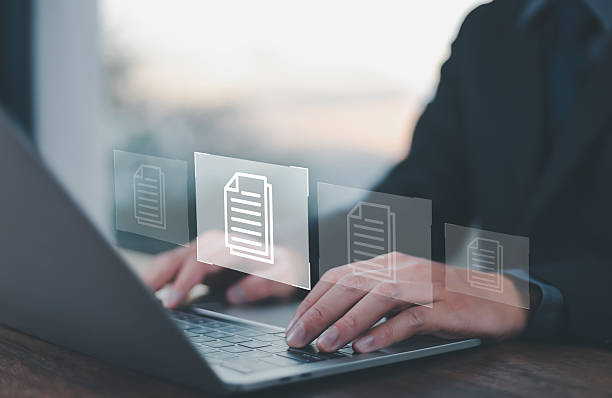What is On-Page SEO and Why is it Important?
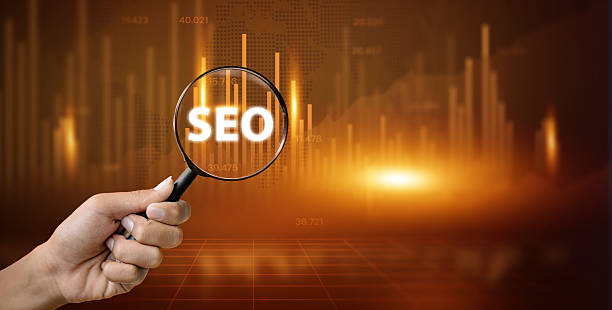
On-Page SEO refers to a set of actions you take within your website to improve its ranking in search results.
These actions include optimizing content, site structure, HTML tags, and other internal site elements.
The importance of On-Page SEO lies in the fact that it helps search engines better understand your site’s content and show it to relevant users.
A strong On-Page SEO strategy is the foundation for any website’s success in attracting organic traffic.
With correct optimization, you can improve your site’s ranking in search results and attract more visitors.
In fact, On-Page SEO complements Off-Page SEO, and both are essential for a successful online presence.
To better understand the importance of On-Page SEO, it can be compared to a building whose exterior (Off-Page SEO) is attractive, but if the inside of the building (On-Page SEO) is messy and unoptimized, visitors will not have a good experience and will quickly leave the site.
Therefore, attention to the details of On-Page SEO, from choosing the right keywords to optimizing images, all affect the improvement of your site’s ranking and user experience.
For more information on this topic, you can visit this link Wikipedia.
Research shows that 80% of customers trust companies with professional websites more. Does your current website inspire this trust?
With Rasaweb’s corporate website design services, solve the problem of customer distrust and a weak online image forever!
✅ Create a professional image and increase customer trust
✅ Attract more sales leads and grow your business
⚡ Get a free consultation
Keyword Research and Choosing the Best Ones for SEO

Keyword research is one of the most important steps in On-Page SEO.
You need to find the keywords that users use to search for your products or services.
There are various tools for this, such as Google Keyword Planner, Ahrefs, and SEMrush.
After identifying relevant keywords, you should check their competition and search volume.
Choosing keywords with low competition and high search volume can help you rank faster in search results.
Also, keep in mind that the chosen keywords should be relevant to your site’s content so that users have a positive experience after entering the site.
For example, if you have an online store that sells cosmetics, related keywords may include “buy sunscreen,” “best mascara brand,” and “lipstick price.”
Using Long-Tail Keywords can also be a useful strategy.
These keywords are longer and more specific and usually have less competition.
For example, instead of using the keyword “sports shoes,” you can use the keyword “buy men’s sports shoes for running.”
This type of keyword helps you attract users who are exactly looking for the product or service you provide.
Optimizing Titles and Meta Descriptions to Improve SEO

Title Tags and Meta Descriptions are two important elements in On-Page SEO that are displayed in search results.
Titles should be attractive and relevant to the page content and include the main keyword.
The title length should be between 50 and 60 characters to be fully displayed in search results.
Meta descriptions should also be concise and engaging, encouraging users to click on your site link.
The meta description length should be between 150 and 160 characters.
Using secondary keywords in meta descriptions can also help improve your site’s ranking.
For example, if your page is about “On-Page SEO Training,” the page title could be “Comprehensive On-Page SEO Training – Step-by-Step Guide” and the meta description could be “In this article, learn about the principles of On-Page SEO and techniques for optimizing your site for search engines.
Improve your site’s ranking and attract more traffic.”
Note that the title and meta description should be unique and different on each page of your site.
Repeating these elements can damage your site’s ranking.
| Title | Description |
|---|---|
| Buy the Best Laptop at a Reasonable Price | Various used and brand new laptops with original warranty and free shipping throughout the country |
| Complete SEO Training in 2024 | Increase your site’s ranking on Google by learning On-Page and Off-Page SEO techniques |
Optimizing Page Content and Using Keywords

Page content is the most important factor in On-Page SEO.
Your content should be high-quality, valuable, and relevant to the target keywords.
Try to write your content in a way that answers users’ questions and meets their needs.
Using keywords in titles, subtitles, body text, and images can help search engines better understand the topic of your page.
However, avoid overuse of keywords, as this can be considered a Black Hat SEO technique and harm your site’s ranking.
Keyword Density should be between 1% and 3%.
Also, try to present your content in an organized manner.
Using titles and subtitles, lists, and short paragraphs can help content readability.
Adding images, videos, and infographics can also increase content appeal and keep users on your site longer.
Remember that the main goal of On-Page SEO is to provide the best user experience for your site visitors.
Did you know that your company’s website is the first point of contact for 75% of potential customers?
Your website is the face of your brand. With **Rasaweb**’s corporate website design services, create an online presence that inspires customer trust.
✅ Create a professional and lasting image of your brand
✅ Attract target customers and increase online credibility
⚡ Get a free consultation from **Rasaweb** experts!
URL Structure and its Importance in On-Page SEO

URL structure is another important factor in On-Page SEO.
Your URLs should be short, readable, and relevant to the page content.
It is best to use main keywords in URLs and avoid using special characters and too many numbers.
Long and complex URLs can be confusing for search engines and users.
For example, if your page is about “Mobile Phone Buying Guide,” the page URL could be: `www.example.com/mobile-phone-buying-guide`.
It is recommended to use a hyphen (-) instead of an underscore (_) in URLs, as search engines consider hyphens as word separators.
Also, make sure your site’s URLs are logical and hierarchical.
Meaning that the URLs of subpages should reflect their relationship to the main pages.
Optimizing Images and Using Alt Text
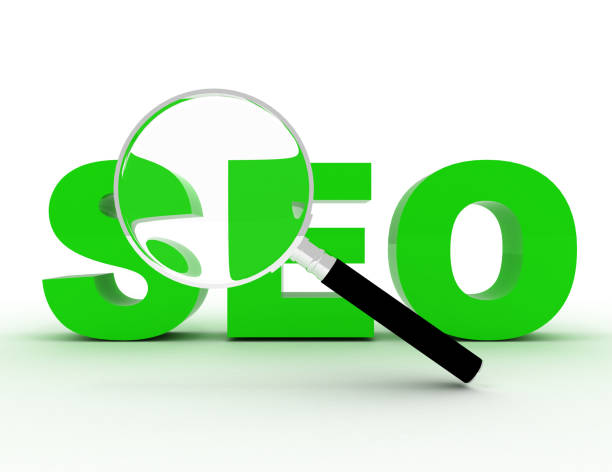
Optimizing images is an important aspect of On-Page SEO that is often overlooked.
High-volume images can slow down your site’s loading speed and affect user experience.
Before uploading images to the site, optimize them to reduce their volume.
There are various tools for this, such as TinyPNG and ImageOptim.
Also, make sure that the image file names are relevant to their content and use keywords in the file names.
In addition, using Alt Text for images is essential.
Alt text helps search engines understand the content of images and is shown to users if the images are not displayed.
Alt text should be descriptive and relevant to the image content and include the main keywords.
For example, if your image is a mobile phone, the alt text could be “Samsung S21 Mobile Phone.”
The Importance of Internal Linking in Improving SEO
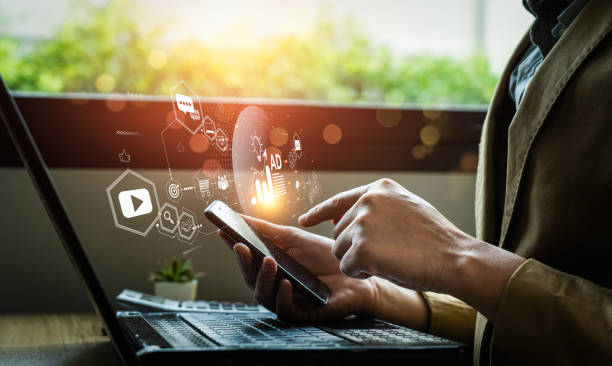
Internal linking refers to creating links between different pages of your site.
This helps search engines better understand your site’s structure and identify the more important pages.
Internal linking also helps users easily navigate your site and view more content.
Try to link to other relevant pages on each page of your site.
For example, if you are writing an article about On-Page SEO, you can link to your other articles about Off-Page SEO and keyword research.
Also, keep in mind that the Anchor Text should be relevant to the destination page.
The anchor text should show users and search engines what the destination page is about.
Avoid using general anchor texts like “click here.”
For example, instead of using “click here for more information,” you can use “click here for more information about Off-Page SEO.”
| Source Page | Link Text | Destination Page |
|---|---|---|
| SEO Training Article | Link Building Strategy | Link Building Strategy Article |
| Sunscreen Product Page | Best Sunscreen | List of Best Sunscreens |
Improving Site Loading Speed and its Impact on SEO

Site loading speed is an important factor in Google rankings.
Users expect sites to load quickly, and if your site is slow, they may leave it and go to other sites.
Google also ranks sites that load faster higher.
To improve your site’s loading speed, you can use various tools such as Google PageSpeed Insights and GTmetrix.
These tools show you what factors are slowing down your site and what actions you can take to improve them.
Some of the actions you can take to improve your site’s loading speed include: optimizing images, using CDN, enabling Gzip compression, reducing the number of HTTP requests, and using Cache.
Also, choosing a quality hosting can have a big impact on your site’s loading speed.
Do you dream of a thriving online store but don’t know where to start?
Rasaweb is your comprehensive online store design solution.
✅ Attractive and user-friendly design
✅ Increase sales and revenue⚡ Get a free consultation
Responsive Design and Mobile Compatibility for SEO

Given the increasing use of mobile devices to search the Internet, Responsive Design is essential for SEO.
Responsive design means that your site should automatically adapt to the screen size of different devices (such as mobile phones, tablets, and computers).
Google gives more importance to sites that are optimized for mobile and ranks them higher.
To check if your site is optimized for mobile, you can use Google’s Mobile-Friendly Test tool.
If your site is not optimized for mobile, you should change its design or use a responsive template.
In addition, make sure that your site’s fonts and images are displayed well on mobile devices and that users can easily navigate your site.
Optimizing mobile SEO is a basic requirement of On-Page SEO.
Monitoring and Tracking On-Page SEO Results

After taking On-Page SEO actions, it is important to monitor your results and track your site’s performance.
To do this, you can use various tools such as Google Analytics and Google Search Console.
These tools show you which keywords are driving traffic to your site, which pages have the most visits, and what problems exist on your site.
Using this information, you can improve your On-Page SEO strategy and optimize your site to earn higher rankings in search results.
For example, if you find that a particular keyword is driving a lot of traffic to your site, you can increase your content about that keyword and improve your ranking.
Also, if you find that a particular page of your site has little traffic, you can optimize its content or create more internal links to that page.
On-Page SEO is an ongoing process, and you should regularly review your site and make the necessary changes.
Frequently Asked Questions
| Question | Answer |
|---|---|
| What is On-Page SEO? | It refers to a set of actions taken within the website to improve ranking in search engines. |
| Why is On-Page SEO important? | Because it helps search engines better understand your site’s content and structure and improves user experience. |
| What are the most important elements of On-Page SEO? | Title and meta descriptions, keywords, URL structure, quality content, image optimization, internal linking, and site speed. |
| How to optimize the Title Tag and Meta Description? | The title should include the main keyword and be engaging, and the meta description should be an enticing summary of the content with related keywords. |
| What is the role of keywords in On-Page SEO? | Keywords help search engines understand what the page content is about and should be used naturally and intelligently in the text. |
| How is image optimization done for On-Page SEO? | By compressing the volume, using a descriptive file name, and filling the Alt tag with related descriptions and keywords. |
| What is Internal Linking and what is its application? | Connecting different pages of the site to each other. This helps to distribute the Page Authority and improve the crawling of search engines. |
| What is the importance of site loading speed in On-Page SEO? | High speed improves user experience and is one of the important ranking factors for search engines like Google. |
| What effect does the site’s Mobile-Friendliness have on On-Page SEO? | Given the increasing number of mobile users, being responsive is essential for providing a suitable user experience on all devices and Google’s mobile index priority. |
| What are the important factors related to content in On-Page SEO? | Originality, quality, comprehensiveness, readability, proper use of headings (H1, H2,…), and regular content updates. |
And other services of Rasa Web advertising agency in the field of advertising
Smart Marketing Automation: A combination of creativity and technology to increase click-through rates by designing an attractive user interface.
Smart Social Media: An effective tool to increase sales with the help of custom programming.
Smart Website Development: An effective tool to analyze customer behavior by using real data.
Smart Digital Advertising: A fast and efficient solution for managing campaigns with a focus on marketing automation.
Smart Linking: An effective tool for user interaction by customizing the user experience.
And over a hundred other services in the field of internet advertising, advertising consulting and organizational solutions
Internet Advertising | Advertising Strategy | Advertorial Report
Resources
Inbound Marketing at HubSpot
,On-Page Optimization at Moz
,The Complete On-Page SEO Guide from Ahrefs
,On-Page SEO in Search Engine Journal
? To achieve your big business goals in the digital world, Rasaweb Afarin Digital Marketing Agency is with you with a professional and result-oriented approach. From personal website design to comprehensive SEO and content marketing strategies, we provide everything you need to be seen and grow.
📍 Tehran, Mirdamad Street, next to the Central Bank, South Kazerun Alley, Ramin Alley No. 6
“`

